
This is what Toronto's new streetcars look like in action
The first of the TTC's $1.2 billion fleet of new low-floor streetcars made its first daylight appearance on Bathurst Street this morning, ferrying a herd of reporters from the yard at Hillcrest, down to Bathurst Station, and back again successfully, albeit slowly and with subtle a police escort.
After months of secretive testing under the cover of darkness, the new vehicles are preparing to enter service next summer on the Spadina, Dundas, and Bathurst routes. When they finally hit the streets, each of the $6 million vehicles will be the first in Toronto to feature full Presto integration, all-door boarding, and automatic wheelchair and stroller ramps.
There's drastically more space as well. The added length and additional 24 seats mean there is room for 119 more passengers per vehicle - more than the current number of seats on the existing CLRV model.
The streetcars feel very different to the current fleet. There is better lighting, air conditioning strong enough for condensation to form on some of the metal surfaces, and a bump-free ride minus many of the squeals, rumbles, and electrical whines that are a feature of the current cars.
It remains to be seen whether the face-to-face seating areas (awkward touching knees for tall strangers) and firm seat cushions will be a turn-off for the first riders, however.
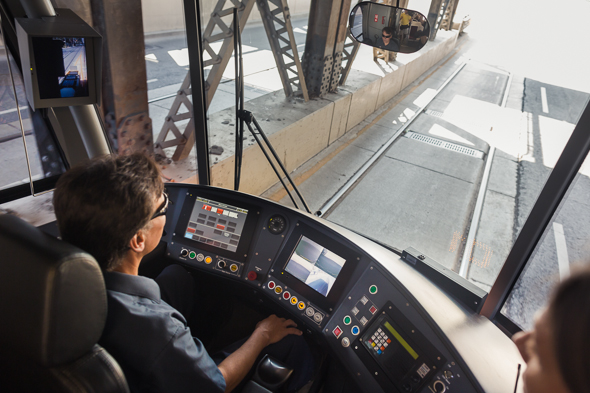
"Even a higher rate of speed it's still a much smoother ride than our current fleet," says Alan Boyd, the driver of the test model. "Personally, I find it much easier to operate this vehicle," he adds, showing off the lever used to control acceleration and braking.
In terms of personality, the TTC has dispensed with the old stop announcements, recorded by employee Cheryl BomĂŠ, and opted instead for a computerized female voice for the various automated warnings and stop announcements that's similar to the one used on the new Rocket subway trains. Even the familiar dinging bell is a digital recording.
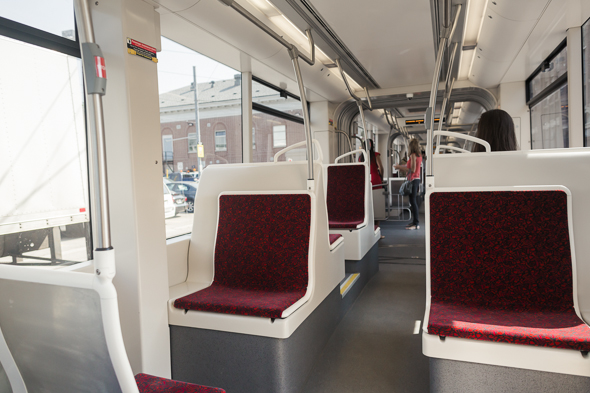
Some changes were required to the road, too. Construction crews had to adjust the platform height on Spadina right-of-way to accommodate the swing of the automatic ramp. Before, the TTC simply dropped a slab of concrete beside the tracks, jokes Stephen Lam, the chief vehicle engineer.
The overheard wires had to be tweaked as well so that the trolley pole used to draw power is able co-exist with the new car's pantograph system when it goes live in the years to come.
"It's beautiful," says Robert Brown, a streetcar driver for the past 18 years waiting at Bathurst station when we pull up. He likes the low floor, the AC, and the separated cab area that features a comfortable leather seat. "They're nice, very nice," he adds.
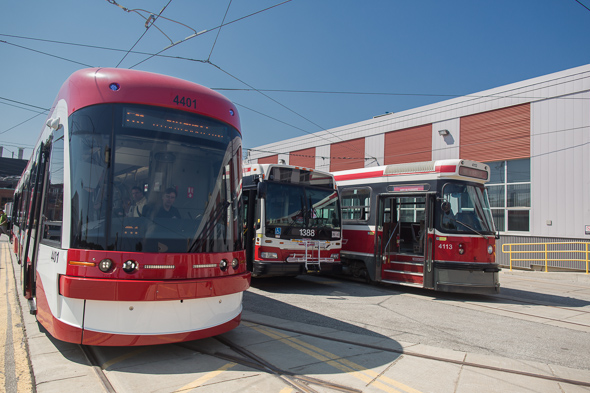
QUICK STATS:
Seating: 70
Standing: 181 max (250 crush load)
Length: 30.20 metres
Width: 2.54 metres
Height: 3.84 metres
Weight: 48,200 kilograms
Max speed: 70 km/h
Cost per streetcar: $6 million
Fleet cost: $1.2 billion
Fleet size: 204 streetcars
Additional costs: $800 million (Leslie carhouse, curb cuts, wiring, and new track)
ROLLOUT SCHEDULE:
505 Dundas: Mid 2014
510 Spadina: Mid 2014
511 Bathurst: Mid 2014
509 Harbourfront: Late 2014
501 Queen: Early 2015
508 Lake Shore: Early 2015
504 King: Mid 2016
512 St. Clair: Mid 2017
502 Downtowner: Early 2018
503 Kingston Road: Early 2018
506 Carlton: Mid 2018
MORE IMAGES:
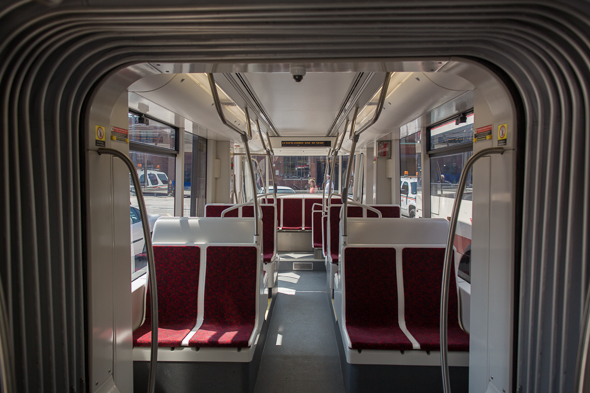
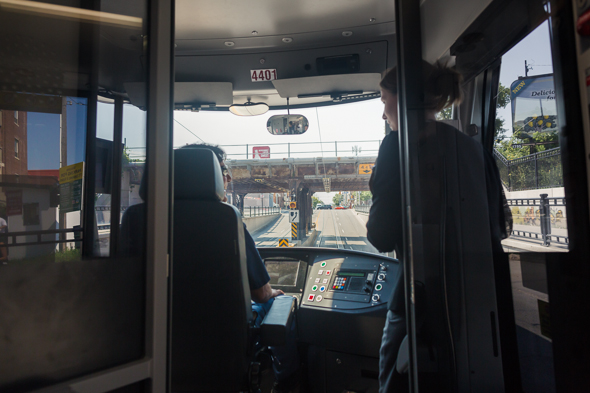
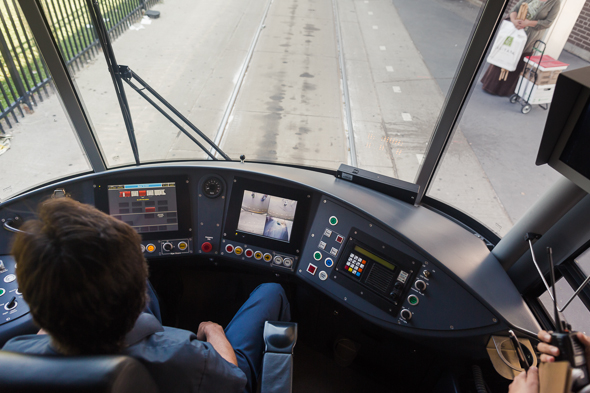
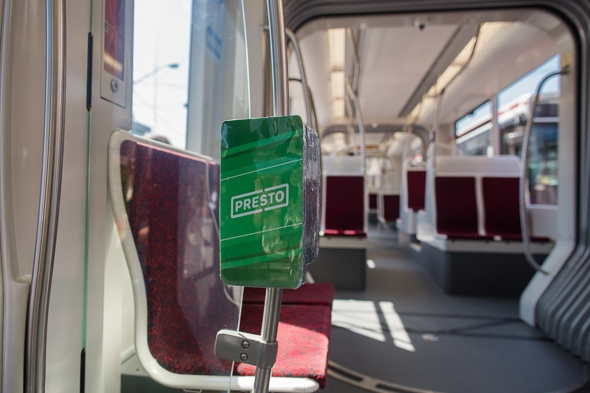
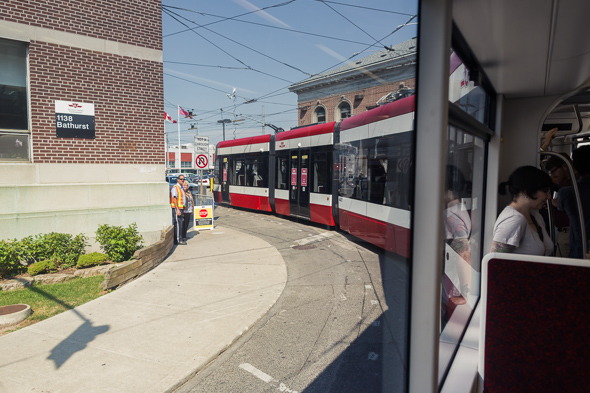
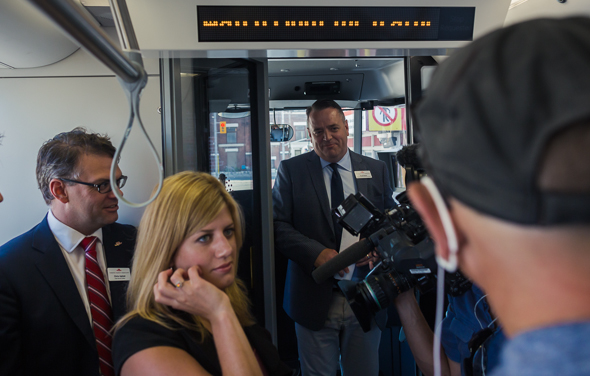
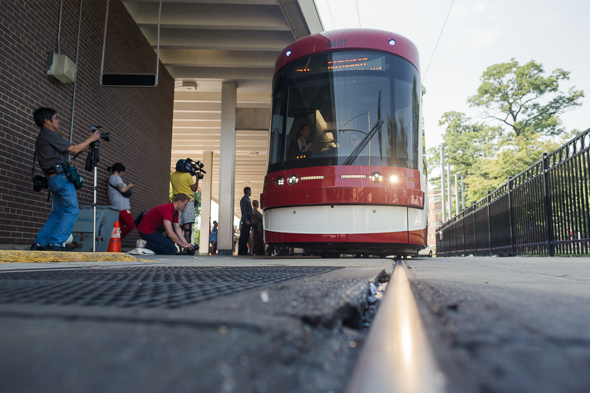
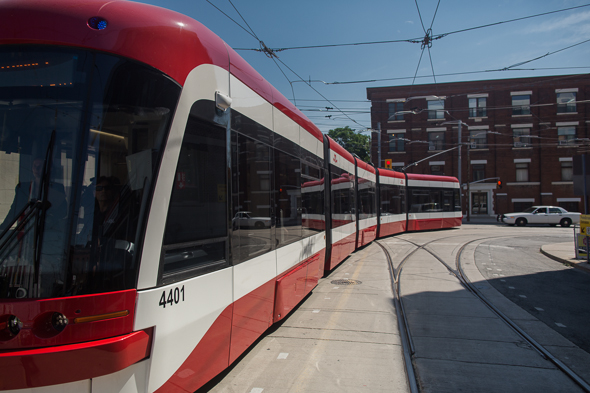
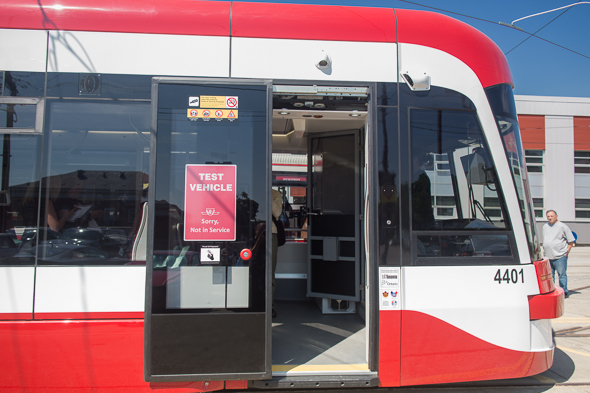
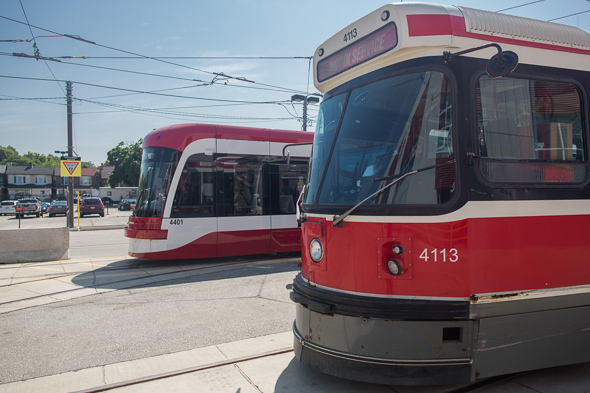
Chris Bateman is a staff writer at blogTO. Follow him on Twitter at @chrisbateman.
Photos by Tom Ryaboi
Latest Videos
Latest Videos
Join the conversation Load comments







